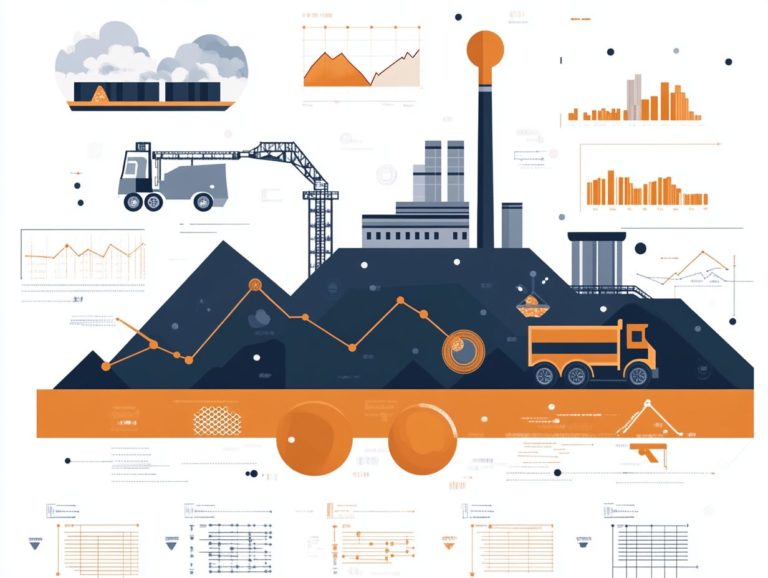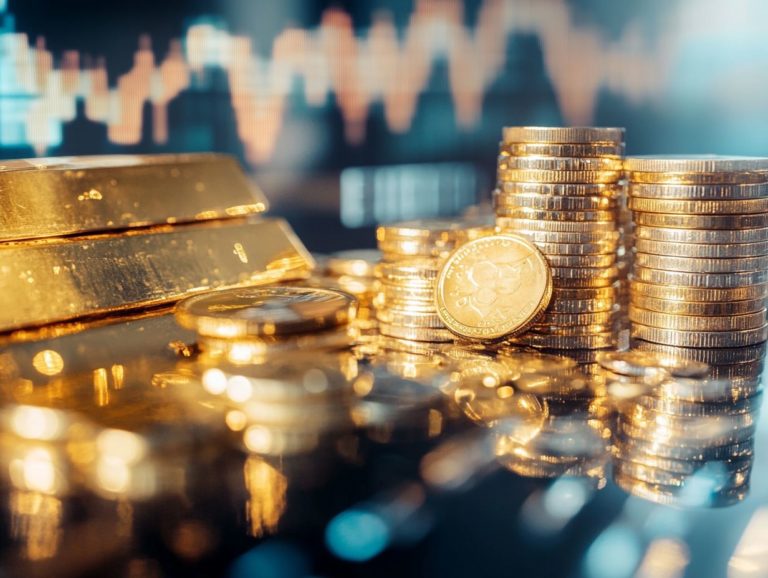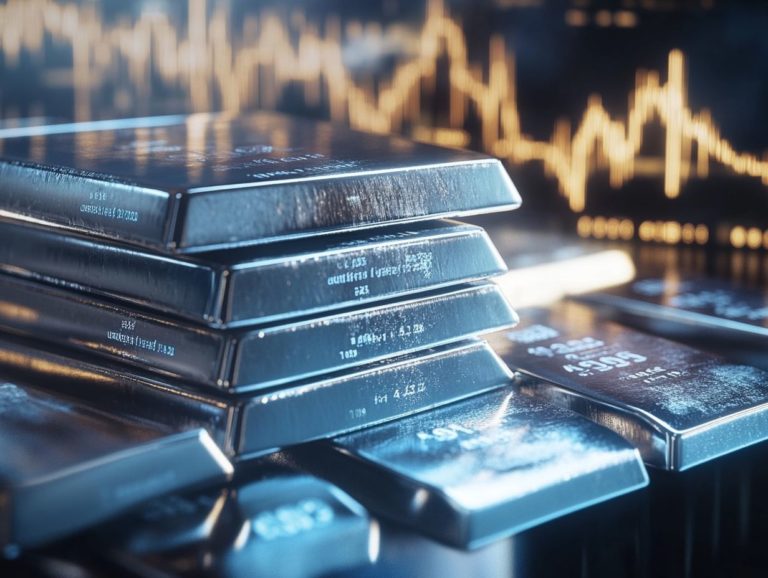Silver Investment Strategies: Market Outlook
Investing in silver presents a distinctive opportunity for you to diversify your portfolio and safeguard against economic uncertainties. With its dual nature as both a precious metal and an industrial commodity, silver is influenced by various factors, from economic indicators to political events.
In this article, you will explore current market trends, recent performance, future predictions, and various types of silver investments available. Whether you re considering long-term strategies or aiming for short-term gains, understanding the intricacies of silver investment can elevate your financial strategy and potentially enhance your returns. Embark on this journey into the realm of silver investment, uncovering both its advantages and inherent risks.
Contents
- Key Takeaways:
- Current Market Trends
- Factors Affecting Silver Prices
- Types of Silver Investments
- Strategies for Investing in Silver
- Diversifying Your Portfolio with Silver
- Frequently Asked Questions
- What is the current market outlook for silver investment strategies?
- What are some effective silver investment strategies that I can consider?
- How does the price of silver typically fluctuate in the market?
- Is now the perfect moment to invest in silver? Let’s find out!
- What are the potential risks associated with silver investment strategies?
- Are there any tax implications to consider with silver investments?
Key Takeaways:
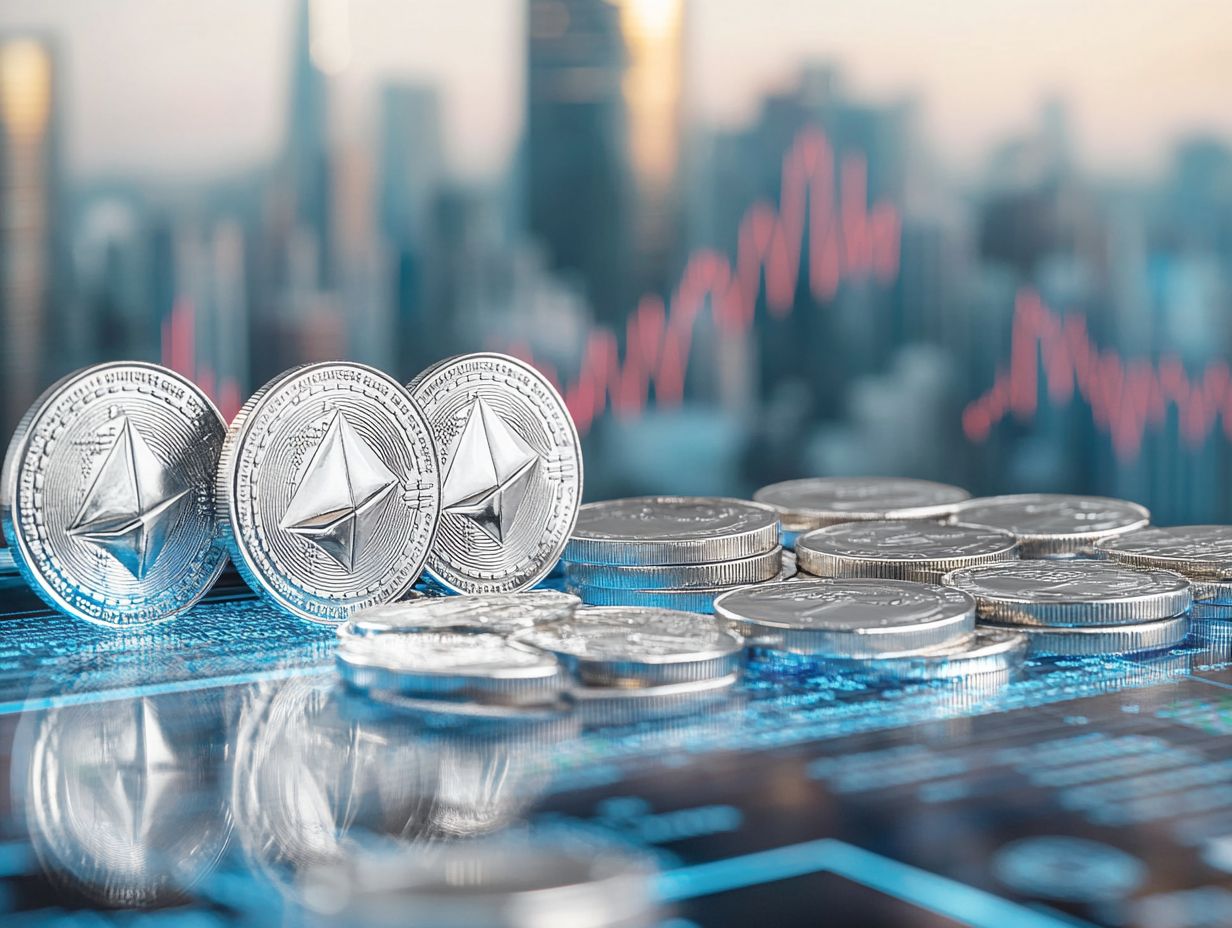
- Want to diversify your portfolio? Investing in silver might be your best move!
- Understanding economic and political factors affecting silver prices helps inform your investment decisions.
- Consider a mix of physical and paper silver investments, along with both short-term and long-term strategies, for a well-rounded portfolio.
What is Silver Investment?
Silver investment is your gateway to preserving wealth and potentially reaping profits. This precious metal has captured the attention of savvy investors for its industrial applications and as a hedge against inflation.
As you observe its price movements and market cycles, you might find compelling insights from industry leaders like Keith Neumeyer of First Majestic Silver. He predicts that silver’s future will shine bright, with prices possibly reaching US$100, driven by evolving supply-demand dynamics and rising industrial demand, particularly in clean energy sectors.
Historically, silver has served as a currency and a store of value since the days of ancient civilizations. Unlike stocks or bonds, silver investments offer you a tangible asset that often holds its ground during economic downturns. Its unique position in both the investment and mining sectors highlights its versatility, making it less vulnerable to market fluctuations affecting equities.
When comparing silver to other commodities like gold valued mainly for its perceived stability silver stands out with its industrial applications providing distinct advantages. This unique aspect could elevate its price potential, especially given the surging demand for silver in technology and renewable energy applications.
Current Market Trends
Current market trends in the silver market reveal notable fluctuations in silver prices, fluctuating between US$30 and US$50 in recent months. This volatility is driven by factors such as geopolitical uncertainty and inflation concerns.
Be aware of these trends, as they indicate potential investment opportunities or risks associated with silver exploration and industrial demand. This is particularly relevant in the realm of clean energy applications, like solar panels and electric vehicles, where silver plays a crucial role.
Recent Performance and Predictions
The recent performance of silver has showcased notable volatility, with experts predicting that future prices could soar to as high as US$100. This projection is fueled by strong industrial demand and shifting supply-demand dynamics within the silver market. As more industries, especially in clean energy, increasingly incorporate silver for solar panels and hydrogen fuel cells, prices may continue to rise.
Influential figures like Keith Neumeyer, the CEO of First Majestic Silver, underscore silver’s transformative role in modern technology. He notes that investment in renewable energy frameworks could intensify market pressure on silver supply, ultimately driving prices higher.
Analysts also highlight that geopolitical tensions and economic fluctuations further add to this volatility, impacting investor sentiment. The intricate relationship between industrial applications and market speculation presents a compelling narrative for anyone tracking silver’s future in our sustainability-focused world.
Don t miss out on the opportunity to invest in silver. Explore your options today!
Factors Affecting Silver Prices
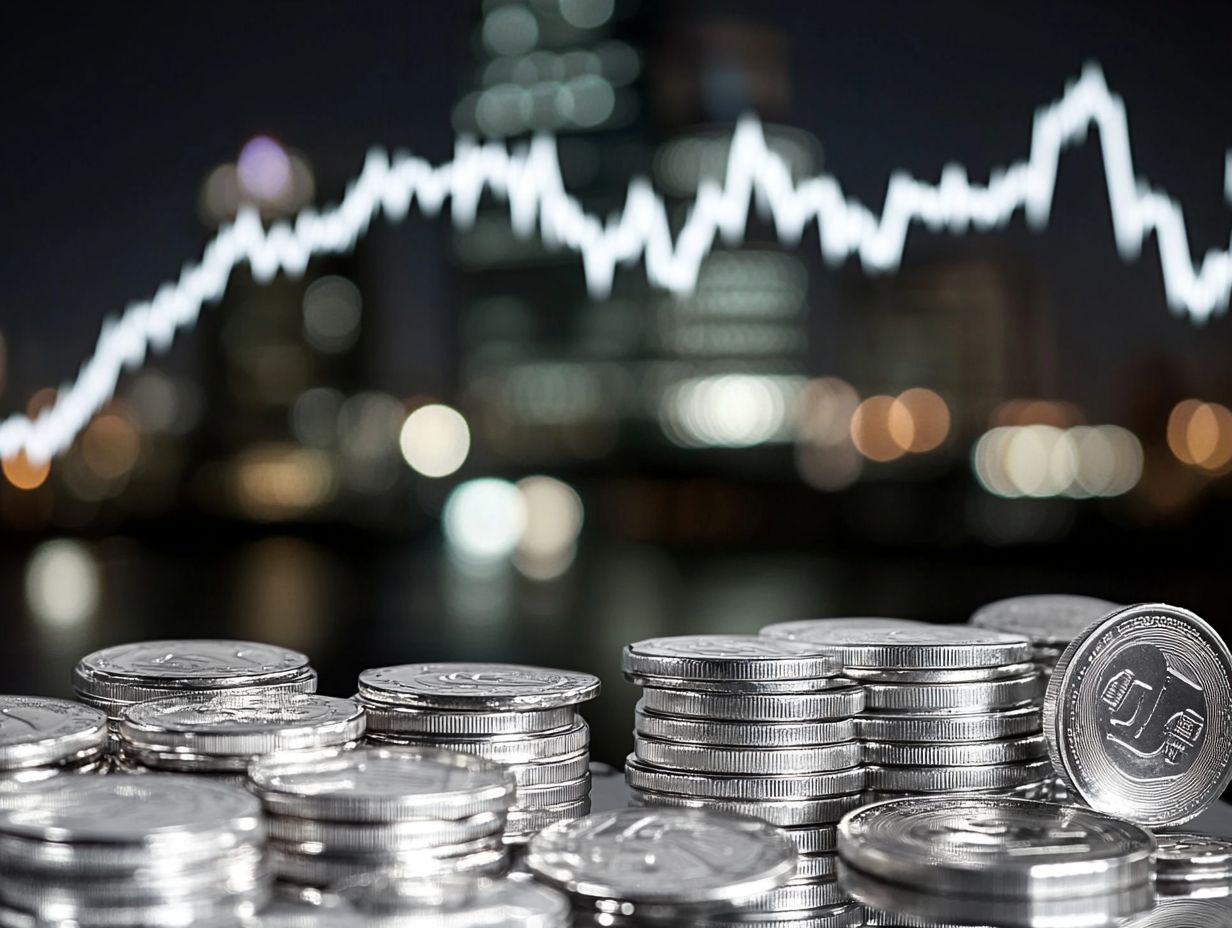
Several key factors influence silver prices, including inflation rates, geopolitical uncertainty, and fluctuations in industrial demand. Each of these elements plays a pivotal role in shaping the silver market’s dynamics.
As you observe the evolving mining sector, grasping these factors becomes essential for navigating the complexities of silver exploration. This knowledge enables you to seize opportunities that arise with changing market cycles.
Economic and Political Influences
Economic and political influences, such as geopolitical uncertainty and inflation, significantly impact silver prices. This creates a dynamic landscape for you as an investor.
As tensions escalate in regions like China and North Korea, you may notice fluctuations in market cycles that ultimately affect industrial demand and the stability of the silver market.
During economic downturns or global crises, investors rush to silver for protection against rising prices. Historical events, like the 2008 financial crisis, illustrate this trend, where a surge in demand coincided with increased investor anxiety.
Organizations like the Silver Institute offer valuable insights into market dynamics. They demonstrate how declining production levels or shifts in mining policies can influence silver’s market value.
Staying informed about economic indicators and geopolitical events is crucial for shaping your investment strategies.
Types of Silver Investments
You have a wealth of silver investment options, ranging from tangible assets like coins and bars to paper investments such as ETFs (Exchange-Traded Funds) and shares in mining companies. Each avenue presents its own set of risks and rewards, shaped by factors like inflation and industrial demand.
These elements can fluctuate based on silver exploration projects and the overall performance of the mining sector. It is essential for you to stay informed and strategic in your approach.
Physical vs. Paper Investments
Investing in physical silver means acquiring tangible assets like coins and bars. Paper investments generally encompass stocks, ETFs, and derivatives linked to silver prices.
Carefully consider the benefits of owning physical silver against the liquidity and convenience that paper investments offer. The ever-changing nature of silver prices and market strategies makes this decision vital.
Physical silver boasts intrinsic value and can protect against rising prices. However, you’ll need to think through storage solutions and security measures to safeguard against theft or damage.
On the other hand, paper investments shine in terms of liquidity. They enable you to quickly buy or sell your positions in response to market fluctuations without the logistical headaches of managing physical commodities.
Keep in mind that paper investments carry counterparty risk, meaning their performance relies on the issuer’s reliability. Understanding these distinctions will help you make informed decisions as you determine the best path for your financial aspirations.
Strategies for Investing in Silver
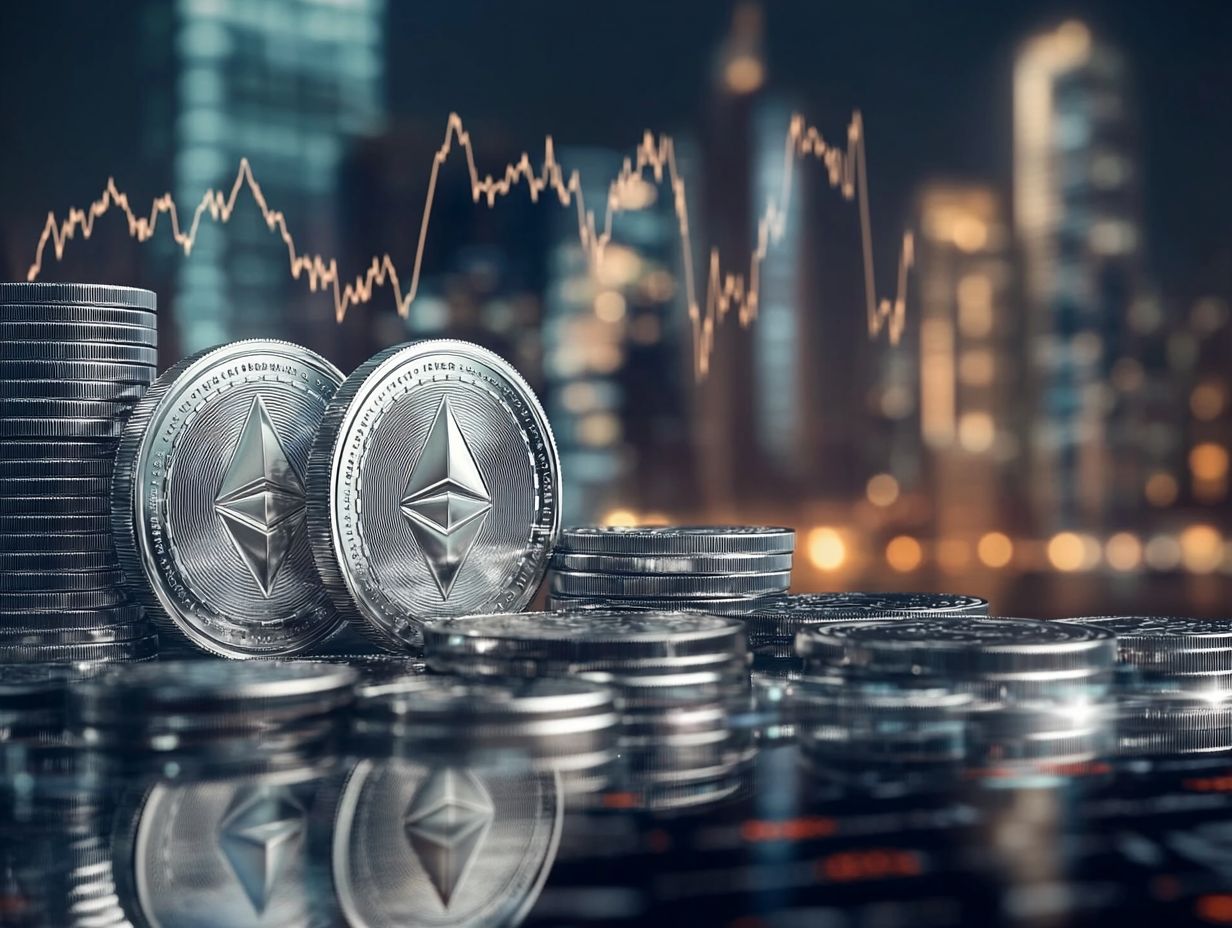
Investing in silver demands a carefully crafted strategy that balances both long-term and short-term approaches. This thoughtful consideration ensures you’re well-equipped to navigate market fluctuations.
As you assess market cycles and economic indicators like inflation, remember that each strategy can yield varying outcomes in the unpredictable silver market. This ultimately influences prices and your overall investment success.
Start your silver investment journey today and unlock new financial opportunities!
Long-term vs. Short-term Approaches
Long-term investment strategies in silver focus on market fundamentals and trends. In contrast, short-term trading strategies aim to seize immediate price movements. Understanding the dynamics of the silver market is essential for both approaches, as they can significantly influence the success of your investment strategy, especially during periods of heightened market volatility.
If you lean towards long-term strategies, you will emphasize broader economic issues, such as inflation and industrial demand. These factors can help you forecast silver prices over several years. For those interested in enhancing their knowledge, considering 5 silver investment strategies for beginners can provide valuable insights. This approach requires patience and a keen eye for potential growth, making it particularly fitting during stable market conditions when prices are more predictable.
Short-term trading, on the other hand, requires quick decision-making and an awareness of fleeting fluctuations. It is best suited for volatile environments where your investments can either soar or take a nosedive in no time. By recognizing the nuances between these strategies, you can optimize your portfolio and enhance your overall investment outcomes in tune with market cycles.
Diversifying Your Portfolio with Silver
Diversifying your investment portfolio with silver offers a robust hedge against inflation and market fluctuations. This elevates your overall investment strategy.
As a precious metal, silver possesses intrinsic value while also thriving in industrial applications. This duality ensures that it can perform well across various market cycles and economic conditions, making it a wise choice for any discerning investor looking into the future outlook for silver prices.
Understanding the Benefits and Risks of Investing in Silver
Investing in silver presents a unique blend of benefits and risks. On one hand, it acts as a hedge against inflation and stands out as a valuable precious metal. On the other hand, it responds to the tune of market cycles and experiences price volatility. Grasping these dynamics is essential to navigate the silver market effectively and make informed decisions.
When economic uncertainty looms, the demand for silver often rises, establishing it as a reliable store of value. However, be mindful of significant price fluctuations driven by external factors, such as geopolitical tensions or shifts in mining output that can disrupt supply chains.
For instance, during periods of rising inflation, silver frequently outshines traditional assets as many consider it a safe haven. Conversely, in a booming economy, demand may wane, leading to price declines.
Therefore, assessing both the advantages and risks, alongside historical market trends, can offer you a more comprehensive perspective as a potential investor.
Frequently Asked Questions
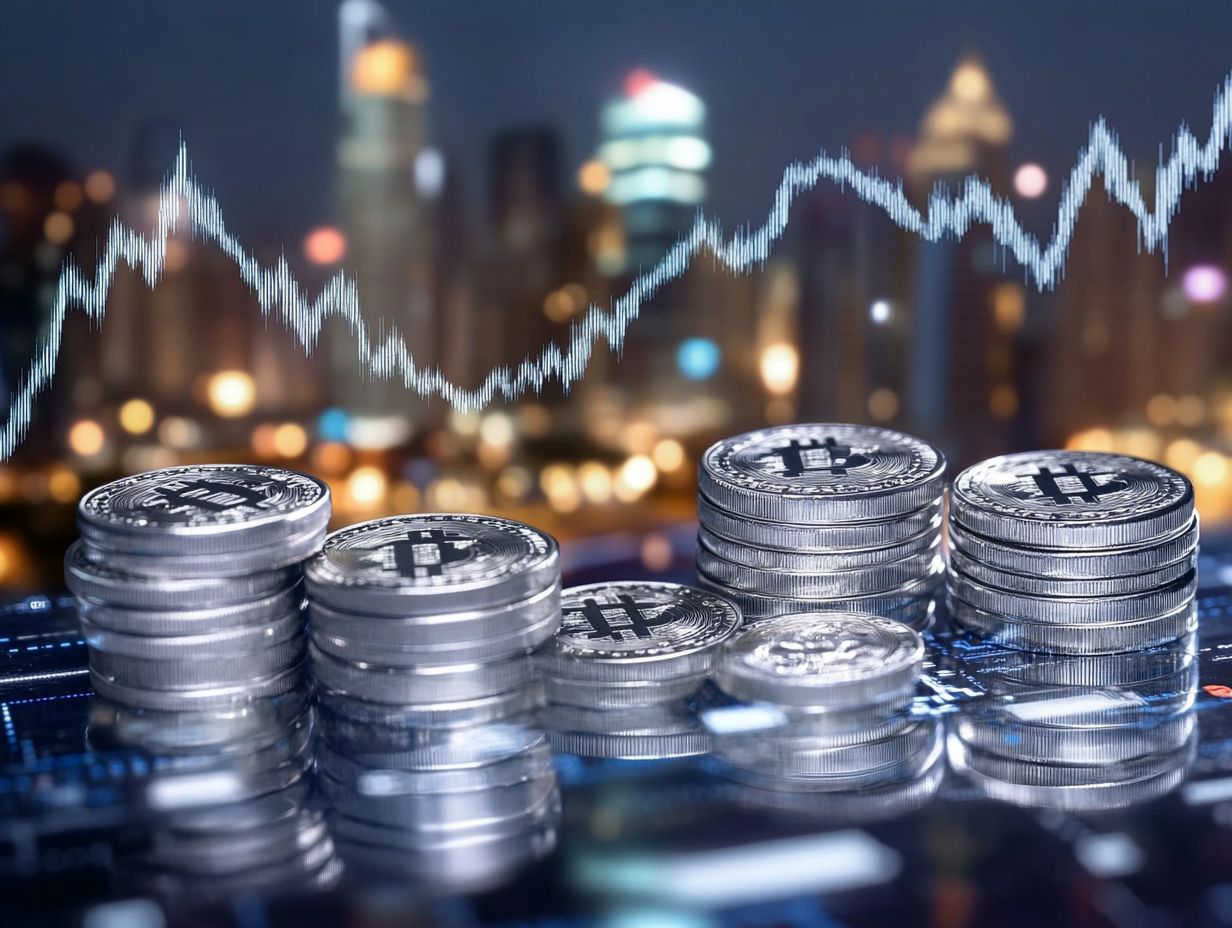
What is the current market outlook for silver investment strategies?
The current market outlook for silver investment strategies is positive. Silver has been performing well in recent years and is expected to continue its upward trend due to its use in industrial and technological applications.
What are some effective silver investment strategies that I can consider?
Some effective silver investment strategies include buying physical silver, investing in silver stocks or ETFs, and participating in silver futures or options trading. It is important to diversify your portfolio and choose a strategy that aligns with your investment goals and risk tolerance.
How does the price of silver typically fluctuate in the market?
The price of silver is influenced by various factors, such as supply and demand, economic conditions, and geopolitical events. It is more volatile compared to other precious metals but also has the potential for higher returns.
Is now the perfect moment to invest in silver? Let’s find out!
Your decision to invest in silver should depend on your financial goals and research. However, many experts believe that silver is currently undervalued and has room for growth, making it a good time to consider silver investment strategies.
Start your silver investment journey today!
What are the potential risks associated with silver investment strategies?
Like any investment, silver comes with risks. These include market ups and downs, world events, and changes in how much people want silver.
Be sure to weigh these risks carefully before diving in! Make informed decisions to protect your investment.
Are there any tax implications to consider with silver investments?
The tax effects of investing in silver can change based on your strategy and where you live. Consult a financial advisor or tax professional to understand how taxes may affect your investments.










